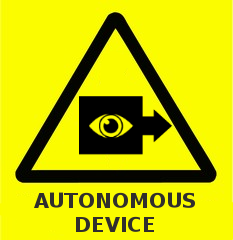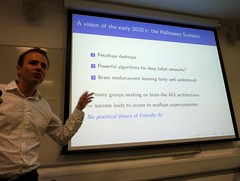 I am one of the signatories of an open letter calling for a stronger aim at socially beneficial artificial intelligence.
I am one of the signatories of an open letter calling for a stronger aim at socially beneficial artificial intelligence.
It might seem odd to call for something like that: who in their right mind would not want AI to be beneficial? But when we look at the field (and indeed, many other research fields) the focus has traditionally been on making AI more capable. Besides some pure research interest and no doubt some “let’s create life”-ambition, the bulk of motivation has been to make systems that do something useful (or push in the direction of something useful).
“Useful” is normally defined in term of performing some task – translation, driving, giving medical advice – rather than having a good impact on the world. Better done tasks are typically good locally – people get translations more cheaply, things get transported, advice may be better – but have more complex knock-on effects: fewer translators, drivers or doctors needed, or that their jobs get transformed, plus potential risks from easy (but possibly faulty) translation, accidents and misuse of autonomous vehicles, or changes in liability. Way messier. Even if the overall impact is great, socially disruptive technologies that appear surprisingly fast can cause trouble, emergent misbehaviour and bad design choices can lead to devices that amplify risk (consider high frequency trading, badly used risk models, or anything that empowers crazy people). Some technologies may also lend themselves to centralizing power (surveillance, autonomous weapons) but reduce accountability (learning algorithms internalizing discriminatory assumptions in an opaque way). These considerations should of course be part of any responsible engineering and deployment, even if handling them is by no means solely the job of the scientist or programmer. Doing it right will require far more help from other disciplines.
 The most serious risks come from the very smart systems that may emerge further into the future: they either amplify human ability in profound ways, or they are autonomous themselves. In both cases they make achieving goals easier, but do not have any constraints on what goals are sane, moral or beneficial. Solving the problem of how to keep such systems safe is a hard problem we ought to start on early. One of the main reasons for the letter is that so little effort has gone into better ways of controlling complex, adaptive and possibly self-improving technological systems. It makes sense even if one doesn’t worry about superintelligence or existential risk.
The most serious risks come from the very smart systems that may emerge further into the future: they either amplify human ability in profound ways, or they are autonomous themselves. In both cases they make achieving goals easier, but do not have any constraints on what goals are sane, moral or beneficial. Solving the problem of how to keep such systems safe is a hard problem we ought to start on early. One of the main reasons for the letter is that so little effort has gone into better ways of controlling complex, adaptive and possibly self-improving technological systems. It makes sense even if one doesn’t worry about superintelligence or existential risk.
This is why we have to change some research priorities. In many cases it is just putting problems on the agenda as useful to work on: they are important but understudied, and a bit of investigation will likely go a long way. In some cases it is more a matter of signalling that different communities need to talk more to each other. And in some instances we really need to have our act together before big shifts occur – if unemployment soars to 50%, engineering design-ahead enables big jumps in tech capability, brains get emulated, or systems start self-improving we will not have time to carefully develop smart policies.
My experience with talking to the community is that there is not a big split between AI and AI safety practitioners: they roughly want the same thing. There might be a bigger gap between the people working on the theoretical, far out issues and the people working on the applied here-and-now stuff. I suspect they can both learn from each other. More research is, of course, needed.